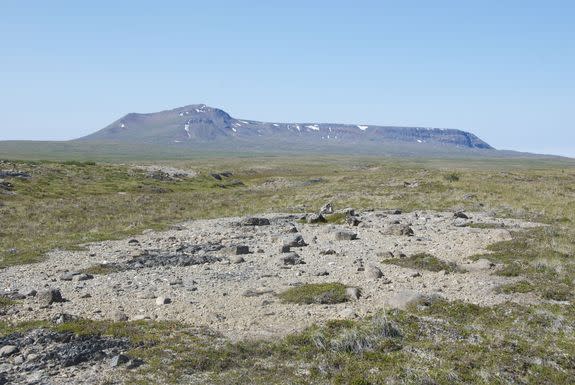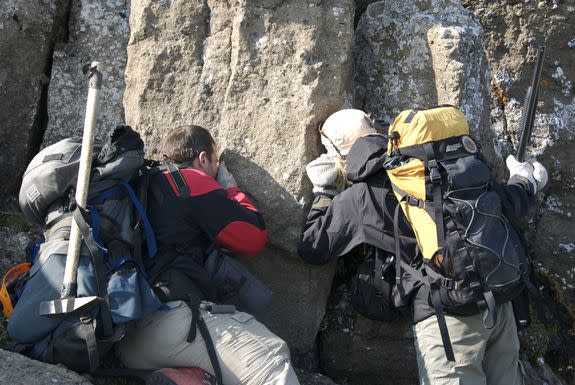Glacier-Covered Volcano Reveals Climate Secrets
An ancient volcano that erupted 1.8 million years ago in western Canada burst through an ice sheet that was twice as thick as scientists had previously estimated, according to the results of a new study.
Researchers collected volcanic (or pyroclastic) samples from Kima'Kho, a partially eroded subglacial volcano located in the province of British Columbia, and made detailed observations of the surrounding terrain. These measurements enabled the scientists to make more accurate models of the regional ice sheet.
When a volcano erupts underneath a glacier, a subglacial volcano can form. These formations, called tuyas, can help researchers piece together details on how the Earth's climate has changed over the course of its history.
The shape of tuyas varies, depending on a number of environmental conditions at the time of the eruption, including the thickness of the ice sheet.
Scientists can also study the deposits made from these subglacial eruptions to determine whether they were generated above or below the waterline of the vast lakes within glaciers — similar to how water rings are left on the inside of a bathtub, the study researchers explained. Analyzing these different "rings," or passage zones, helps the researchers tease out information about how the glacier has evolved.
By calculating the depth and volume of water in these so-called englacial lakes, James Russell, a volcanologist at the University of British Columbia and lead author of the study, and his colleagues were able to make accurate measurements of the thickness of the ancient ice sheet when Kima'Kho erupted 1.8 million years ago.
"At Kima'Kho, we were able to map a passage zone in pyroclastic deposits left by the earliest explosive phase of eruption, allowing for more accurate forensic recovery of paleo-lake levels through time and better estimates of paleo-ice thicknesses," Russell said in a statement.
And the technique can be used to make the same estimates for other tuyas.
"Applying the same technique to other subglacial volcanoes will provide new constraints on paleoclimate models that consider the extents and timing of planetary glaciations," Russell said.
Tuyas are commonly found in Iceland, British Columbia, Oregon and beneath the Antarctic ice sheets, but are otherwise relatively scarce throughout the rest of the world.
The results of the study were published online Tuesday (April 30) in the journal Nature Communications.
Follow Denise Chow on Twitter @denisechow. Follow OurAmazingPlanet @OAPlanet, Facebook & Google+. Original article at LiveScience's OurAmazingPlanet.
Copyright 2013 LiveScience, a TechMediaNetwork company. All rights reserved. This material may not be published, broadcast, rewritten or redistributed.



